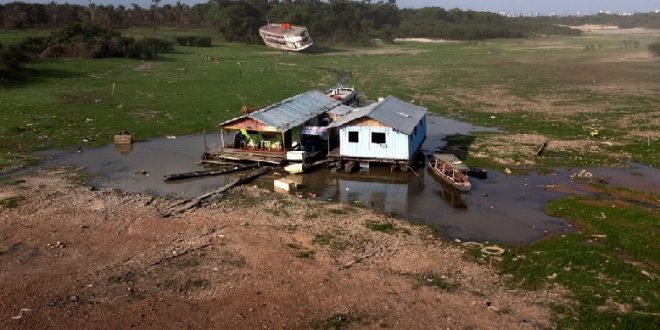27-01-2024
GENEVA/ UNITED NATIONS: Climate change, and not El Nino, was the primary driver of the unprecedented drought last year in the Amazon rainforest that caused rivers to dry up, required deliveries of essential supplies to river communities and resulted in the deaths of endangered dolphins, scientists have said.
 A report released on Wednesday by World Weather Attribution, an international network of scientists, showed that human-induced global warming was draining waterways in the world’s largest rainforest, killing hundreds of endangered dolphins and isolating millions of people who rely on the region’s waterways for food, transport and income.
A report released on Wednesday by World Weather Attribution, an international network of scientists, showed that human-induced global warming was draining waterways in the world’s largest rainforest, killing hundreds of endangered dolphins and isolating millions of people who rely on the region’s waterways for food, transport and income.
Scientists studied events from June to November last year, finding that global warming caused by the burning of fossil fuels had made drought 30 times more likely, producing the extreme temperatures that have caused water levels to slump to their lowest points on record.
The effects of climate change on the region are twofold, reducing rainfall, but also producing hotter conditions that evaporate moisture from plants and soil, increasing the severity of the drought.
While both climate change and El Nino contributed about equally to a reduction in rainfall, higher global temperatures were the biggest reason for the drought, according to the study.
All nine Amazon rainforest countries including Brazil, Colombia, Venezuela and Peru have been hit by the drought, which is expected to get worse after the end of the rainy season in May.
 The drought has had a devastating effect on people’s lives, with many forced to make long journeys to access food, medicine and other essentials. They have been dragging boats over dried-up sections of the Amazon River, according to Simphiwe Stewart, a researcher with the Netherlands-based Red Cross Red Crescent Climate Centre and co-author of the study.
The drought has had a devastating effect on people’s lives, with many forced to make long journeys to access food, medicine and other essentials. They have been dragging boats over dried-up sections of the Amazon River, according to Simphiwe Stewart, a researcher with the Netherlands-based Red Cross Red Crescent Climate Centre and co-author of the study.
Along the Amazon River, people have seen their crops wither and fish disappear. With travel impossible due to low rivers, they form long lines on riverbanks to receive relief supplies, the report says.
In Manaus, the region’s largest city, more than two million residents choked for months on wildfire smoke.
Researchers in Brazil said the low water levels killed at least 178 of the Amazon’s endangered pink and grey river dolphins last year. Thousands of fish have died due to low oxygen levels in the tributaries. (Int’l Monitoring Desk)
 Pressmediaofindia
Pressmediaofindia




